6. Nosferatu the Vampyre
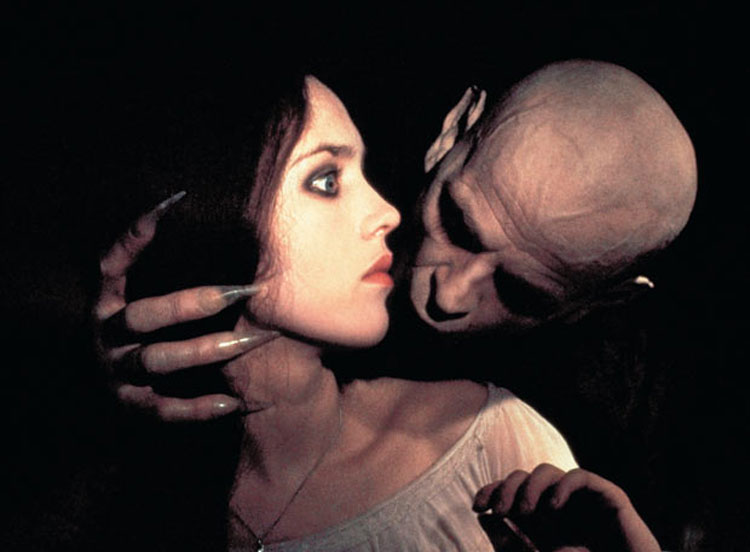
What it can teach us:
1) A remake can enhance an original work when treated with care and respect
The original “Nosferatu” was a truly great silent horror movie from 1922, which needed little improvement. However, Werner Herzog was inspired to shoot a film which respected the original while enhancing some of its features. It’s almost a truism that remakes of classic movies fail, but Nosferatu is an exception, thanks largely to its director’s admiration for the original.
Because this Nosferatu does not set out to be better than its prototype, it succeeds wonderfully in both content and mood. The actors inhabit their roles in ways that serve the story, which remains largely faithful to the original. Some scenes even manage to evoke moods more uneasy and effective than the original, leaving us with the very definition of a successful remake.
2) Filming in the proper locations can evoke a special cinematic aura.
Herzog always tried to film “on location” of whatever setting his movie called for; in this film he found his inspiration in the locations of the original film. It’s almost impossible to imagine scenes working as well in other places, so effective is the mood they create.
Whether we’re watching the Count emerge from a darkened doorway or following Jonathan Harker along his eerie path to the castle, the tension created by the surroundings is palpable. By recreating the magic of the classic film’s atmosphere, Nosferatu the Vampyre demonstrates the power of the right shooting location.
7. Lawrence of Arabia
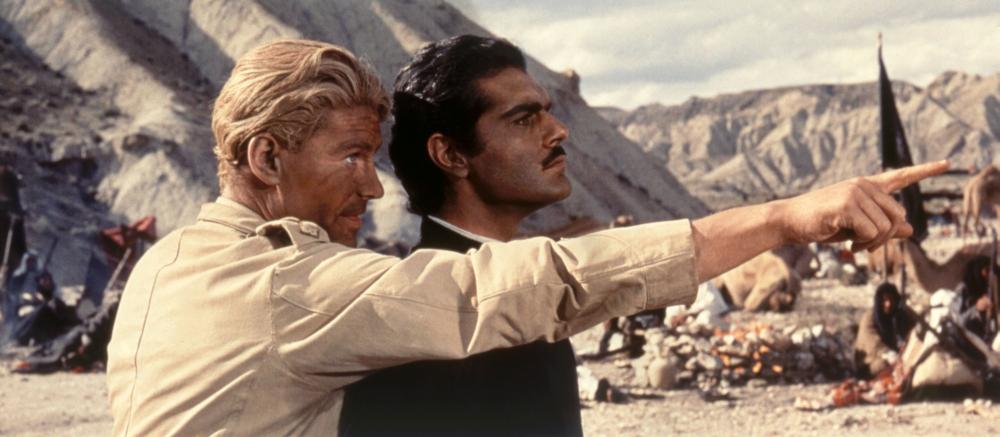
What it can teach us:
1) How a biographical film should be made.
Lawrence of Arabia shows that an epic biopic can be executed effectively. Making a good biographical film is a tough line to walk: it can err on the side of being so historically literal that it’s just boring, or fall into the trap of hero worship of its subject, making it ridiculous. British Lieutenant T. E. Lawrence was a fascinating figure, and this film approaches his life with a perfect mix of both honesty and creativity.
Clocking in at nearly four hours long, Lawrence of Arabia also succeeds at engaging its audience for the entire runtime – no small feat in itself. Made with care for and candor about its subject, this film remains the model for an effective biopic.
2) That an inanimate object can be used as a major protagonist in a movie.
Sand in this film becomes a character that feels almost alive as Lawrence himself. The whole cast is surrounded by desert for nearly the entire story, and it provides a home by turns hostile and benign. The film’s cinematography had to be up to the creative task of making this setting look interesting for nearly four hours, and it succeeds – whether baking under the beating sun or being driven by fierce winds, sand manages to look alive and animated to the viewer.
The creative incorporation of a major element of nature into Lawrence of Arabia’s story shows us that essential ingredients to a film’s success need not always be active participants.
8. Days of Heaven
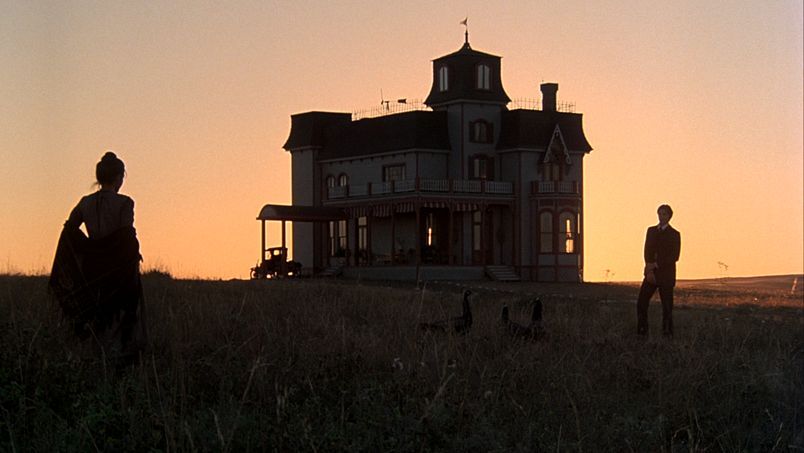
What it can teach us:
1) A movie’s potential to be poetic.
Terence Malick is a rather obvious choice for a director who can make an incredibly poetic movie, and Days of Heaven may be his finest outing. The story itself is a rather simple one, centering around three main characters and the events within a brief span of their lives. But the bigger story here is how the film is executed – through the use of voiceover narration, sparse dialogue, and lingering shots of nature, Days of Heaven feels more like poetry than prose.
Films of this nature can often get lost inside the maze of their own vague intentions, but here is an example of a movie with enough substance to balance its light poetic touches.
2) Lighting can be used to great effect to support a film’s mood.
Days of Heaven was filmed mainly during what is known in cinema as “the golden hour” – encompassing the first hour of light at sunrise and the last hour of light at sunset. Matching the golden hues of the wheat fields it often illumines, the lighting in Days of Heaven both serves and enhances the film’s mood.
These times of day are often associated with peace and tranquility, and the audience feels the warmth of the golden hour radiating from the screen. It really is impossible to imagine watching this film without the effect of its colors, reminding us of the vital role lighting can play in cinema.
9. Barry Lyndon
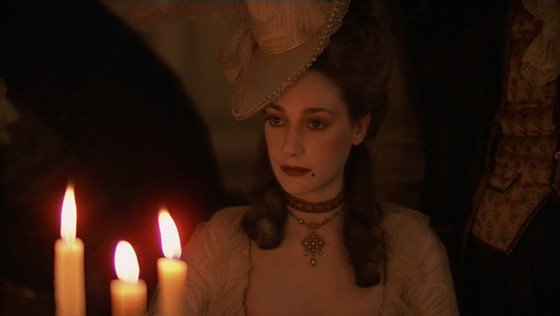
What it can teach us:
1) The movie adaption of a novel need not always be of lesser quality than the book.
Adapting a classic novel (or really any written work) can be a tricky affair. Ask any literature lover what he or she things of the movie version of their favorite book, and the response will often be a negative one. This film is based on “The Luck of Barry Lyndon” by William Makepeace Thackeray.
It’s a classic novel, yes – but hardly a household name. The fact that Stanley Kubrick helmed both the screenplay and the direction of this iconic film shows that the right talent can take even a lesser known piece of fiction and transform it into a movie masterpiece arguably more famous than the original work which inspired it.
2) How a film’s every frame can show the intent and artistry of a painter’s eye.
Whether or not one thinks that Barry Lyndon was a noble character, or that Thackeray’s novel was worthy of Kubrick’s talents, one cannot deny that this film looks gorgeous. This is the quintessential film which can actually be paused at any random point to reveal a scene fit to frame and hang on the wall.
Most people are aware of how Kubrick achieved this – he was a notorious perfectionist not willing to rest until his vision was achieved. But who can argue with the results? Barry Lyndon stands at the top of the list of films which set the bar for stunning visual achievements.
10. No Country for Old Men
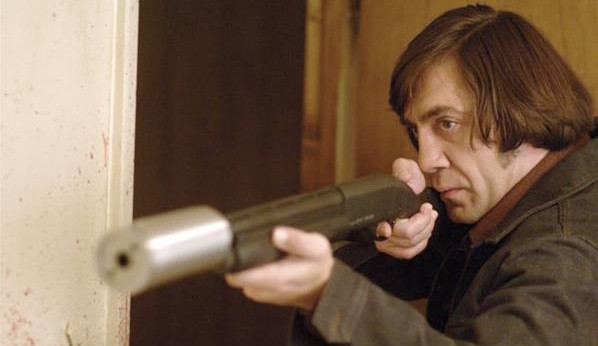
What it can teach us:
1) The bleakness of a film’s message need not hinder its greatness.
This film makes no pretensions of having an upbeat message meant to please its audience – it is undeniably bleak. Though not without instances of human goodness and virtue, chaos largely reigns throughout.
No Country for Old Men examines the viewpoint of an aging law enforcement officer who is no longer capable of understanding the senseless violence which confronts him every day; the audience is left with the same feeling after watching it.
However, evil is never glorified in this film, which seeks to present an accurate and unflinching view of the human condition. Besides being an enthralling story, it also offers itself as a meditation on life, and succeeds as a great film because of its honesty.
2) The days of movie masterpieces are not all behind us; some are still being made today.
Though the history of cinema remains largely unwritten, it can still occasionally feel like “they don’t make them like they used to” – perhaps we need more time to judge correctly. But, though many of the films in this list are at least a generation removed, No Country for Old Men serves as an ideal example of a modern classic.
True artists will always remain loyal to their creative visions, and it is this passion which produces lasting works of art at any point in history. So, let us cherish the established masterpieces while embracing newer works like this which may in their turn become legendary.